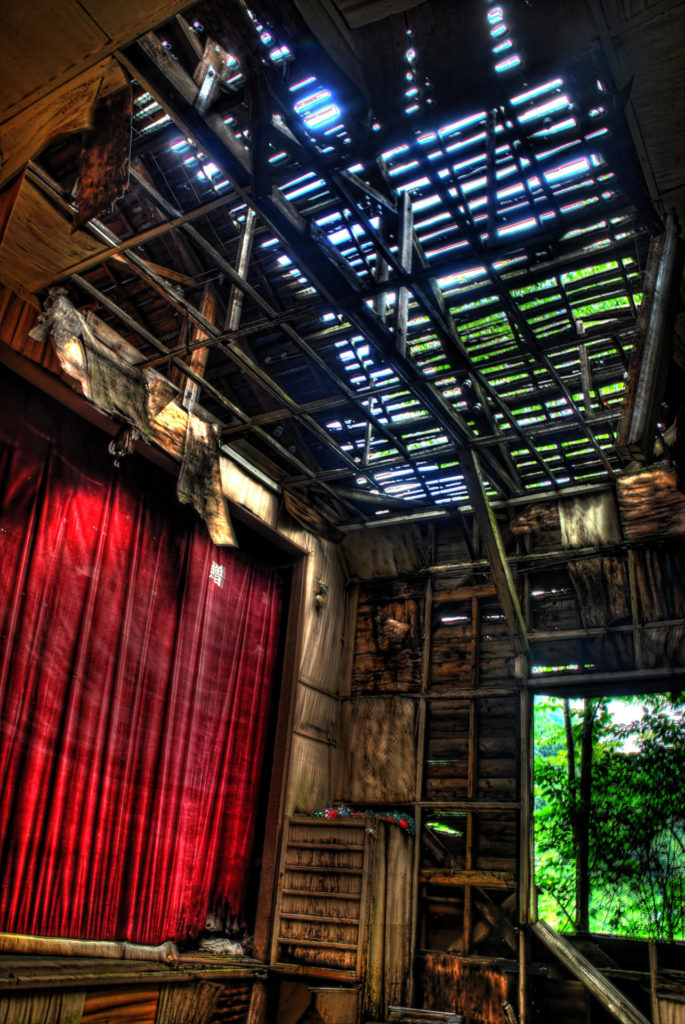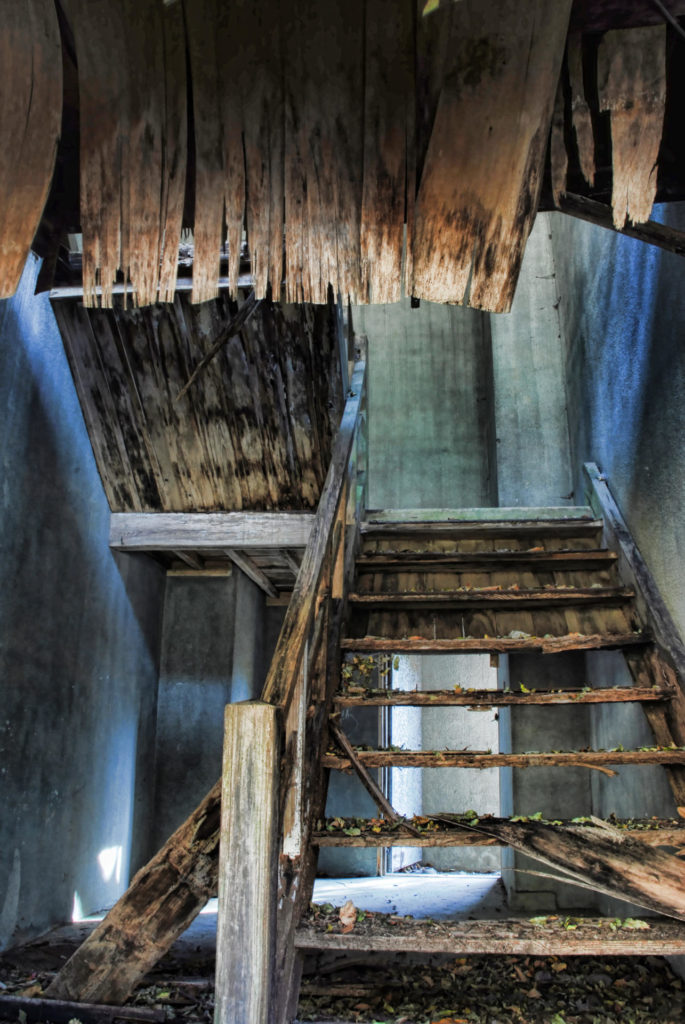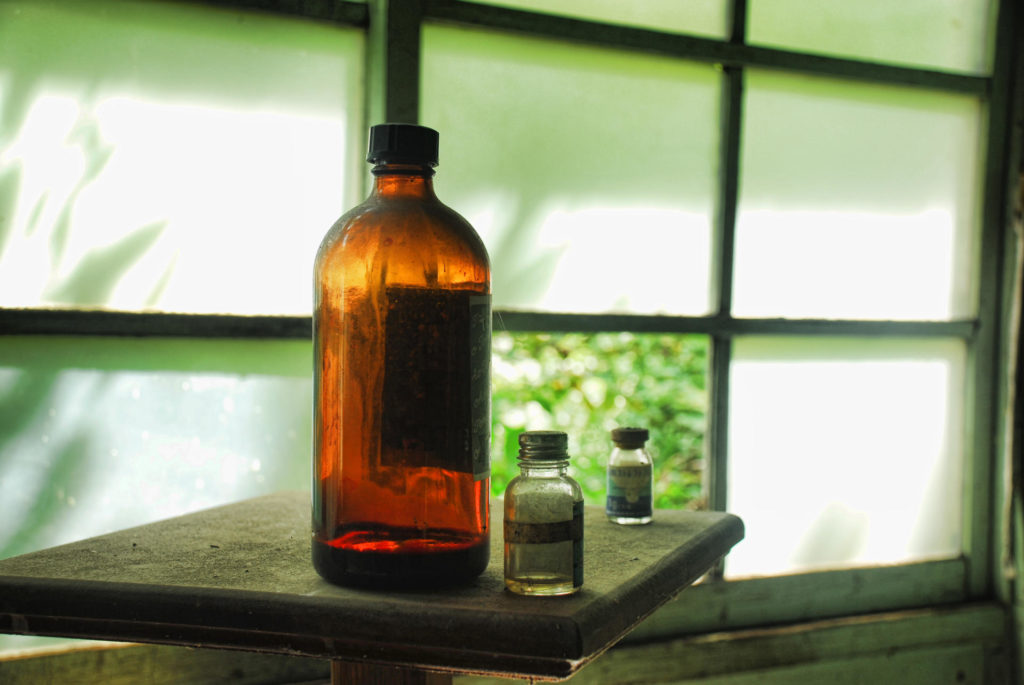The calendar on the wall of the hospital reception room reads 1974, and there are magazines on the shelves from 1971. Across the street in the dormitory apartments, faded photographs feature the latest fashion of the early ’70s. The map of Japan in the school is a little more recent, 1979, yet in the dorms behind the hotel, there are calendars from 2006, indicating it wasn’t that long ago the last people left.

I first discovered this village in the mountains while exploring back roads in 2004. At the time, the place was still occupied, and I didn’t even pay it much attention. I came back in the summer of 2007. Turning the car around in the village main street, I noticed it looked deserted. When a friend told me he had explored and photographed in an abandoned mine, I said I knew of a ghost town he should visit.
When we arrive, a chain hangs across the entrance to the village with a sign warning the curious to keep out. Other access routes—paths crossing rusting iron bridges—are roped off, and the school building is surrounded by a chain-link fence.
When the village was abandoned, the mining company wanted to keep out potential miscreants, thieves and curious explorers. The decaying buildings have the potential for accidents and mischief. However, it seems that most who come here—namely haikyo aficionados—are not visiting to steal or vandalize but to explore and to ponder the remnants of a village that was once alive.

The mountains around the mining village were mined regularly even back in the early days of the Meiji Period (1868-1912), but it wasn’t until 1928 when a mining company was officially awarded the rights to mine. Gold, silver, bronze, zinc and iron were extracted from the bowels of the mountains. Thick cables carried huge iron buckets over the treetops, and mining cars ran along their small rails through the forests.
The village must have been a lively place. There was a hotel, bathhouse, gymnasium, hospital with a dentist’s office, village hall, nursery school, local shrine and, of course, many apartments where people lived. I imagine the families of these mineworkers sharing their lives in this relatively small area in the mountains.


As is the fate of all mines, eventually the cost of maintaining the mine and village exceeded the return for the dwindling amount of valuable metals extracted. During the ’70s, the village died and the families were relocated to the city below the mountains. Perhaps the workers stayed on in the newer dormitories while the older apartments were left to return to nature.





